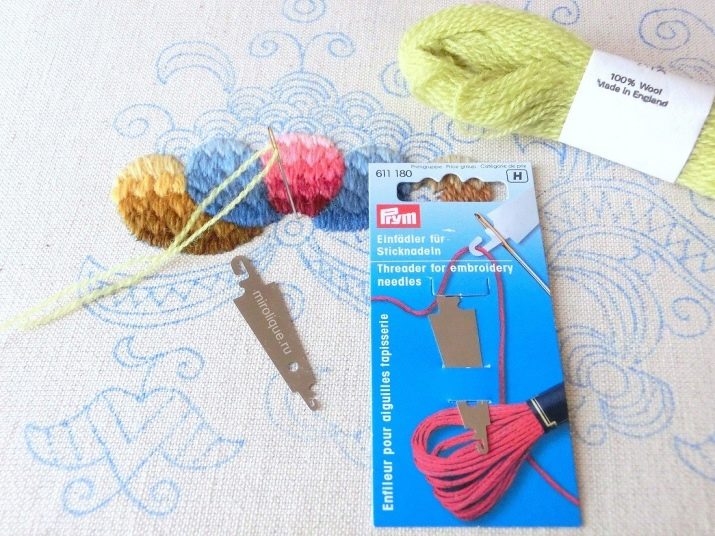Overview of tools and materials for embroidery
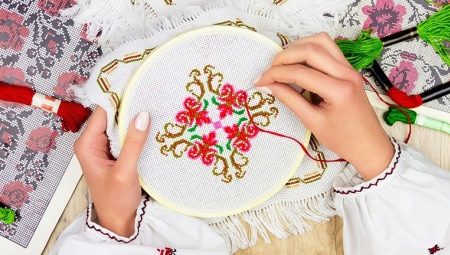
Inexperienced needlewomen often find it difficult to choose tools and accessories for embroidery. There are a lot of devices, but in reality, not all may be needed. The article tells about all the items that will be needed for embroidery.
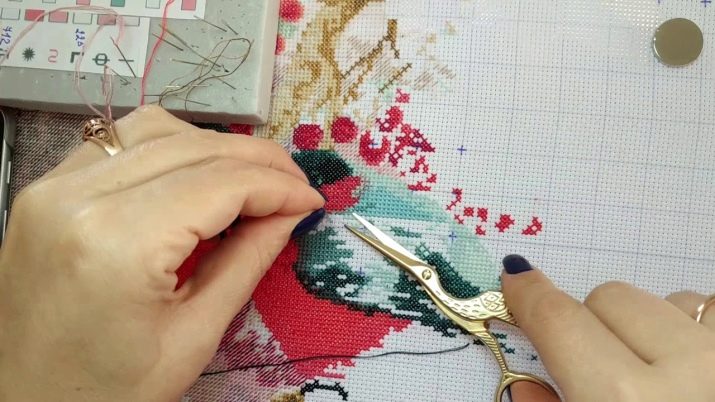
Description and selection of hoops
All craftswomen consider the hoop to be an important piece of embroidery equipment. Thanks to this device, you can stretch and fix the fabric in a comfortable position for work. With light tension, the surface is easily punctured, and the stitches fall one by one. There are several hoop options.
- Round. These are two hoops, one of which fits tightly over the other. There are detachable options: the inner circle will be solid, and the outer one will be detachable, with a screw or with a special clip "ears", during which the upper hoop is pressed against the lower one. There are different diameters: 30, 25, 12, 8 cm.
Recommended for beginners.

- Framework. The canvas on such a device is attached along the edges to special rollers that rotate around their axis. The finished sections are wrapped around the shaft, and the empty area is stretched over the frame. Suitable for patterns from a smooth surface or a cross.
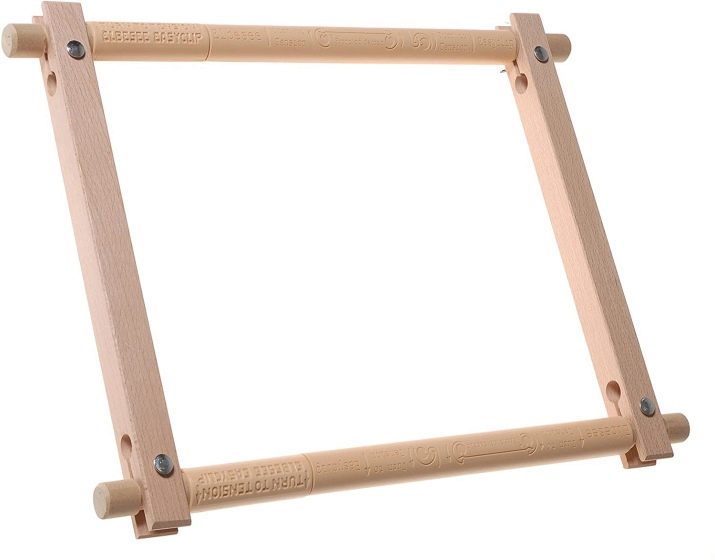
- Q-Snap. This is a square collapsible frame, consisting of 4 tubes, shaped like the letter "L". All tubes are connected into one rectangle, on which a cloth is applied over it and fixed with special fasteners along the edges.
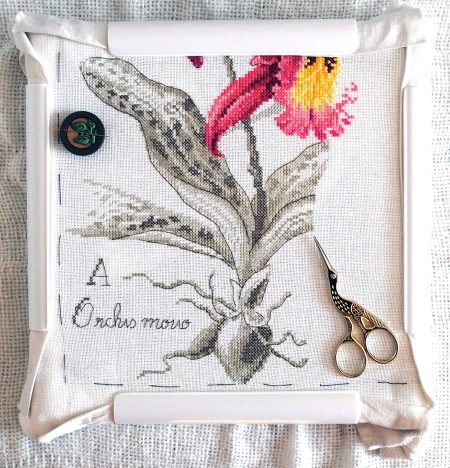
- Floor and table hoops with high legs or stands. All these are mainly frame-type models, but there are also round varieties.

- Hoop with clip for installation on any surface: on the armrest of a chair or table top.
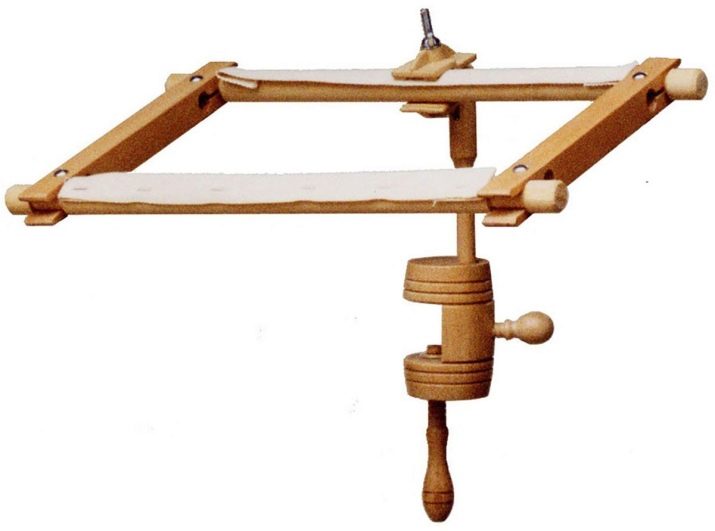
- Magnetic boards. A circuit is placed on the surface of such a board, and it is fixed with the help of magnetic rails. The fasteners can be moved during operation, emphasizing the sewing area. Can be equipped with a magnifying lens.
Most often, these hoops are made of wood, but there are also plastic options.

Other basic fixtures and materials
To create beautiful and durable embroidered paintings, you should purchase quality and practical tools. It is convenient to store all accessories and materials in one place so that nothing is lost or spoiled.
Organizer
This is a container for storing tools, canvas, floss, ribbons, beads. Helps to organize the order in the workplace, not to lose needles, scissors, not to confuse different shades of floss or ribbons. After the end of the lesson, all parts are easy to put away and store until next time. You can make such an organizer with your own hands.
Organizers are universal: they contain all the tools for work, fabric and thread. And there are also small models for scissors, for sorting by shades of floss or ribbons. Such solutions can be produced in the form of small bobbins or rods on a single base. For storing beads, boxes with many cells are used, each of which is latched with a lid.
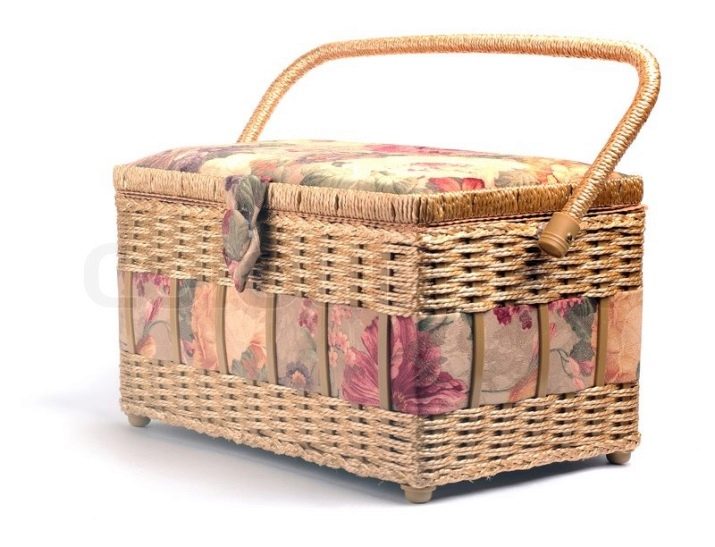
By application, there are:
- mini-cabinet with opening doors and pull-out shelves;
- handbags with zippers with 2-3 compartments and a convenient carrying handle;
- boxes with a lid and storage cells.
Different types of embroidery require different materials and threads, but the set of tools is the same.
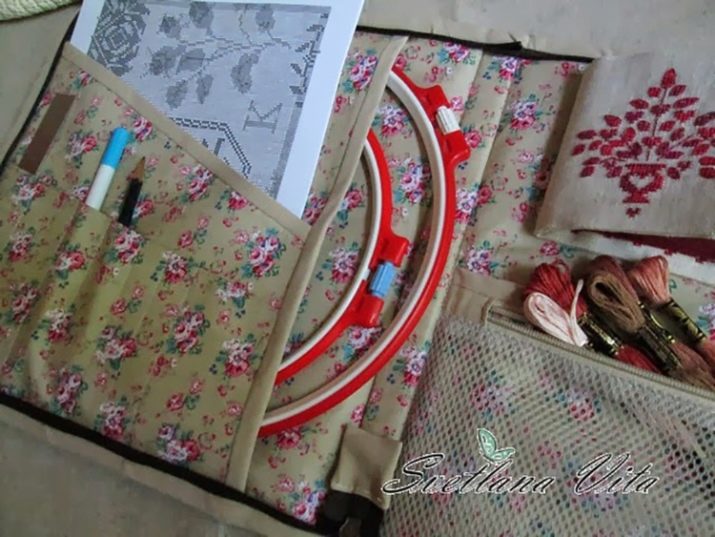
Needles
Not a single needlewoman can do without a needle. There are different types of needles designed for different types of handicrafts.
The universal ones are used for satin stitch embroidery on dense fabrics and silk. For a cross, tapestry needles with blunt tips are suitable, sharp ones split the stitches. They have a large eyelet for more convenient threading, you can insert 6 threads at the same time.

For cross stitching, the needles differ in size: for each type of canvas, a needle with the appropriate marking is selected:
- "Aida 8" - 22 or 20;
- "Aida 11" - 22 or 24;
- "Aida 14" - 22, 24 or 26;
- "Aida 18, 20" - 24 or 26;
- Hardanger - 28.
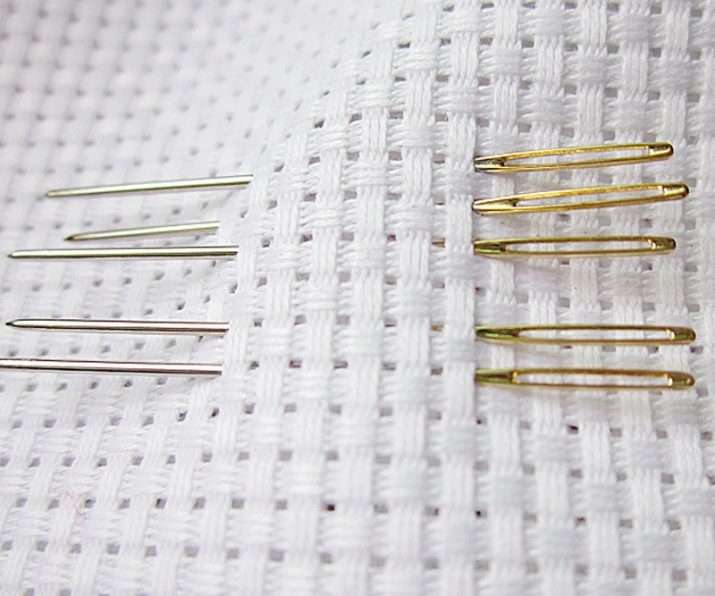
For wool, they take a size from 1 to 10 - these are sharp needles with a huge hole. For very thick yarns, needles from 13 to 26 are suitable. These are very thick and long.
Carpet needles have blunt tips, they are used for embroidery on canvas or fabric with a uniform weave. Sewing needles are not suitable for needlework: they have a small eye that frays the thread, and they are very sharp. For carpet embroidery, special needles with a beveled eye are used, and they also have a special wide handle for more convenient work. The needle has a special lock that allows you to make loops of the same size.
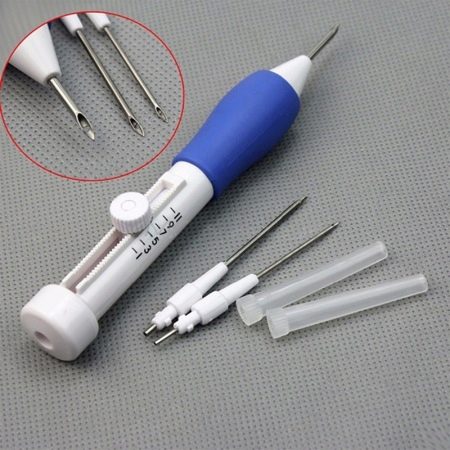
For carpet techniques, a special hook is sometimes used - it helps to thread the wool through the fabric. For beads, special long and thin needles are used, for embroidery with ribbons - thick and short needles with a very large eyelet. There are types for sewing without a knot, there are for silk or cambric.
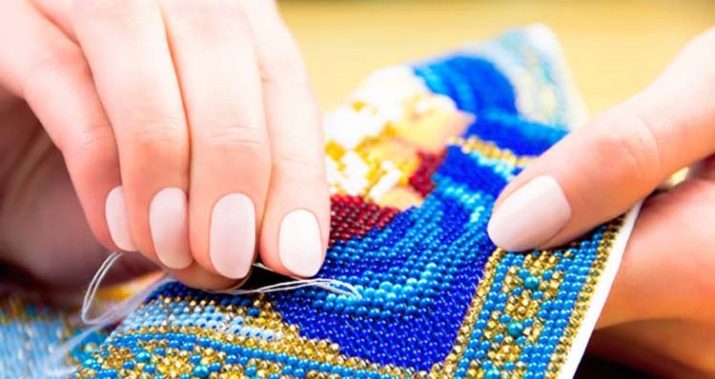
For storing needles, fabric needle cushions are sewn and special cases are purchased. You can purchase a magnetic pincushion so the needles will not be lost and will always be at hand. There are magnetic versions with an arm mount.
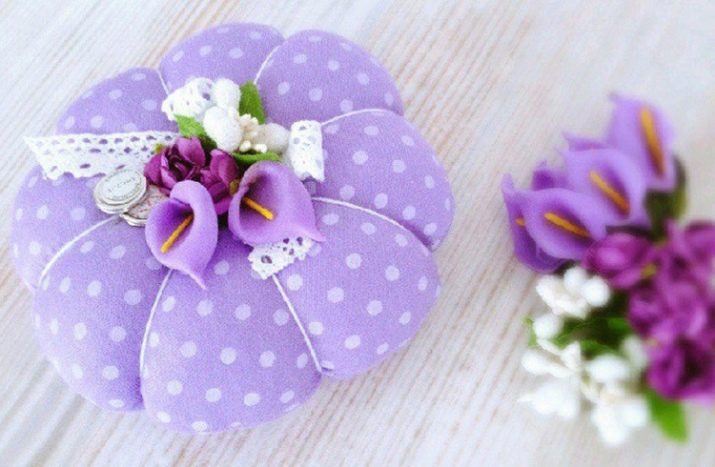
Fabrics
Any fabric in which the number of transverse and longitudinal threads is the same can serve as a warp. The most commonly used cotton canvas: it is suitable for a smooth surface, beads, a cross.
- "Aida" consists of 3-4 strands, forms clearly visible squares, there are visible holes in the corners for threading. Suitable for all types of embroidery. Created for the convenience of counting the number of crosses or beads.There is a canvas under different numbers, they are assigned depending on how many stitches fit in an inch of fabric (this is about 2.5 cm). The most popular is "Aida No. 14".

- With a uniform weave (uniform). This is a denser fabric surface for counting sewing. There are different densities. The stitch size depends on how many cells fit on 1 inch. The thicker the matter, the smaller the cross will be. For a cross, uniformity is optimal in sizes 20, 22, 27, 28.

- With drawing. This is an ordinary canvas, on which a drawing has been previously applied with paint. You can embroider without even having the skills. There is for a cross, beads.
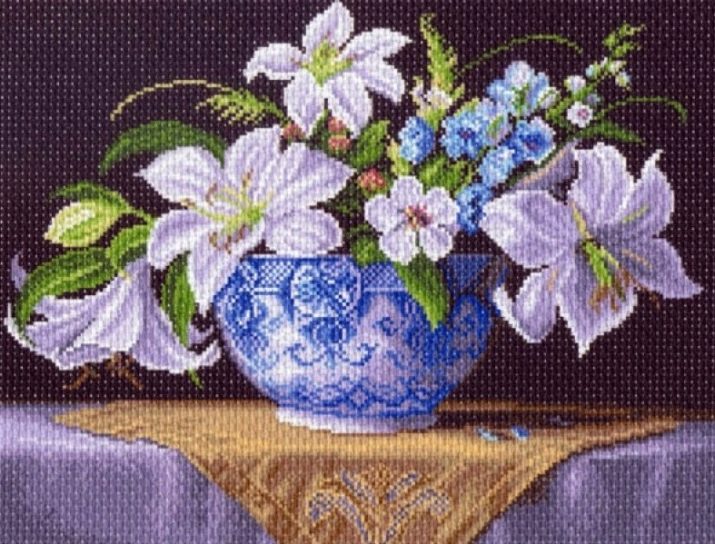
- Linen or cotton linen. There is no clear division into squares, it is more difficult to embroider on such a fabric: the stitches will have to be counted so as not to be mistaken. The result is a beautiful pattern with no noticeable holes or squares. Used to work in two strands.
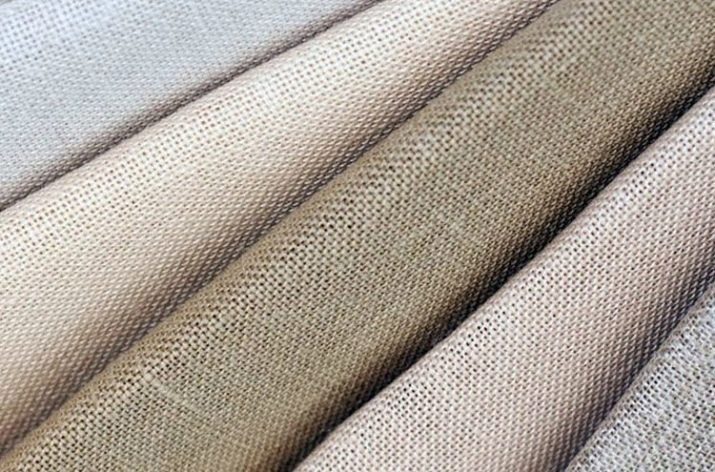
- Overhead canvas. This product is easy to remove. It is used on materials where it is difficult to count the number of stitches. There are different densities: 8.5, 10, 14 and 18 cells per inch. It is attached to the product in the place where the drawing will be located, and then carefully cut from the outside. The inside can be pulled out with tweezers.

- Stramin. A rigid base for embroidering rugs, pillows, bags, tapestries. It is used with woolen or acrylic yarn.
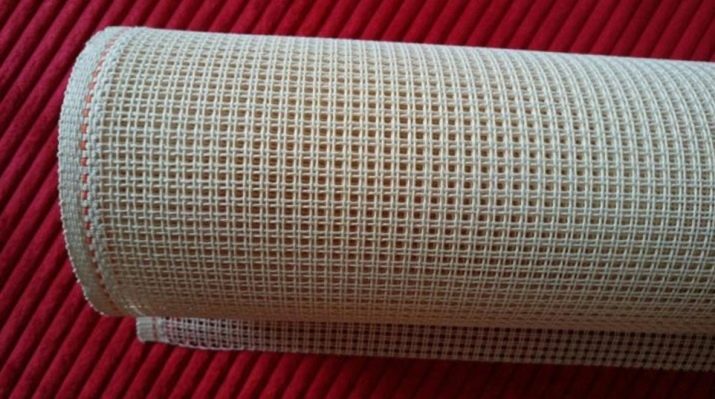
- Perforated paper. The layout of this material corresponds to the type "Aida 14". For sewing, take 1 or 2 threads, a larger amount may damage the paper. After the end, they retreat from the edge and cut off. Suitable for embroidering bookmarks or postcards.

Thread
To create embroidered images, floss is usually used, they are smoother and fit beautifully on the surface of the fabric. You can buy threads of domestic and foreign production. Famous brands: Gamma, DMC, Anchor, Madeira. A quality product will not tear or fade after washing.
For each type of needlework, a thread is selected in thickness and type.

There are the following types of threads:
- cotton;
- linen;
- silk;
- metallized;
- acrylic;
- woolen;
- twisted.
Mouline threads are sold in skeins of 8, 10, 20 meters. Each brand offers its own color palette, you can study the color card to choose the right tone. It is also used to compare shades of different brands.
For cross stitch and stitch embroidery, cotton or linen is most often taken, it is convenient to embroider with them, since such threads do not curl, do not get confused, they lie flat. Silk is suitable for creating a decorative surface, but sometimes for a cross. It is silk that allows making very long stitches using the ironing technique.
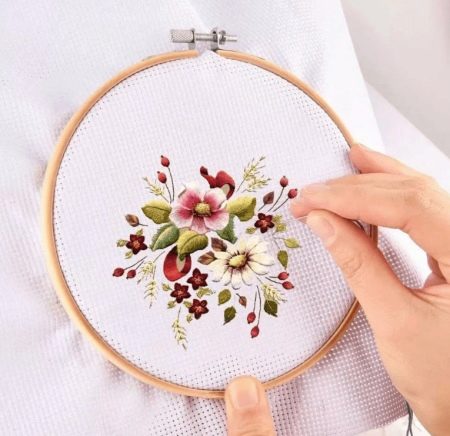
Acrylic or woolen yarn is used for carpet embroidery. For beads, they take synthetics: lavsan, polyester, spandex or regular nylon, better known as fishing line. Twisted threads are suitable for satin stitches, cross stitch and exotic Brazilian embroidery.
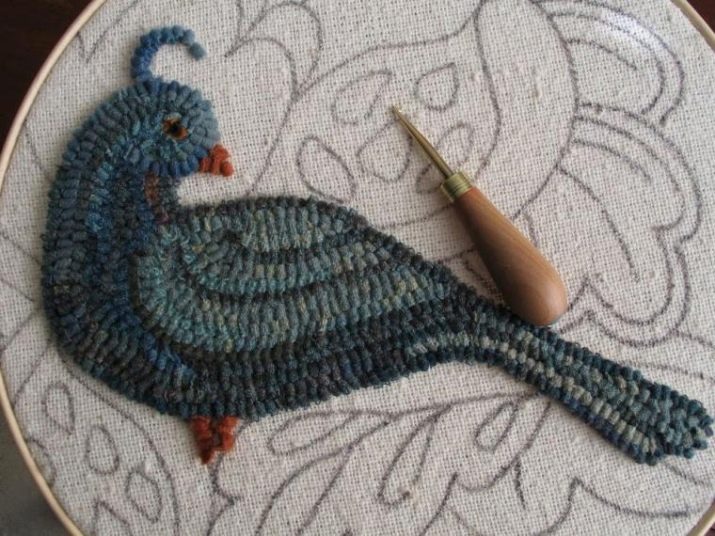
Cutting tools
Needlework scissors are as follows.
- Tailors. Used for cutting canvas or fabric.
- Herons (stork scissors). These are small scissors with thin sharp tips for cutting off floss or wool. The cut ends do not split and are easy to insert into the eyelet.
- For metallic threads. Small stiff models with stronger blades than nail scissors.
You can get a special case for scissors or just a cap for the tips. Such a device protects not only the hands, but also the blades from breaking and damage.
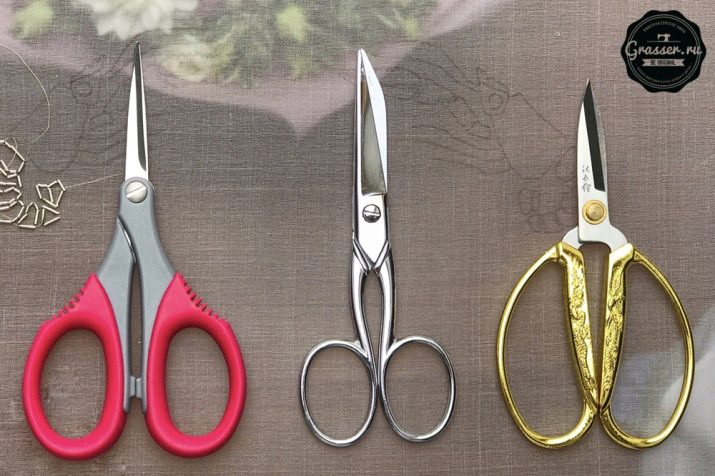
Optional accessories
To work with small patterns, experienced craftswomen use special magnifiers to enlarge the details.
- Pocket. They can be foldable and regular, square and round.
- Tabletop. They resemble mini-lamps, only instead of the lighting part there is a lens in them, sometimes there are devices for attaching the hoop.
- Ruler. Long magnifying lens that can be held in the hand or placed on a patterned surface.
- Glasses with fastening. Perfect for handicrafts.There are varieties with a lifting magnifying part. The main advantage is hands-free.
- With a clothespin. This option can be attached to the armrest of a chair or table.
With a magnifying glass, you can see the smallest details, often they are equipped with additional illumination.

For needlework, you will also need the following list of items:
- thimbles;
- markers;
- eraser;
- wax.
The thimble speeds up the embroidery process and protects the ball of the toe from damage. Indispensable for dense texture.

There are the following types of thimbles:
- metal;
- plastic;
- leather;
- rubber.
The stitching thimble is a tool that guides the thread so that the stitches lie smoother. A special pin on the surface serves to grab the stitch, does not allow tangling, twisting.
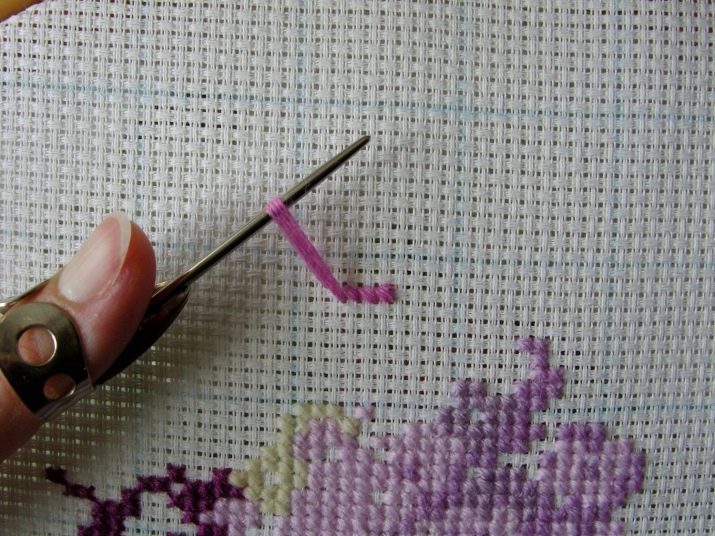
Markers for work use water washable and disappearing. With a washable marker, the canvas is drawn into cells, so that it is convenient to compare with the pattern of the embroidered pattern. There are markers for light and dark surfaces. They are washed off the fabric with cold water. The markings on matter are made disappearing, and after a while the trace disappears.
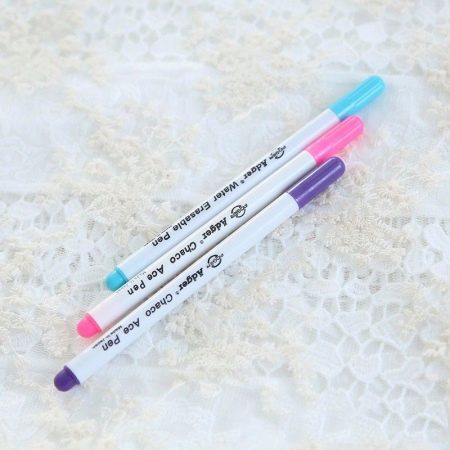
With the help of an eraser, remove a simple pencil from the matter. Important: it does not erase every pencil, so a test is carried out on a flap beforehand. Thread wax makes the thread smoother and more gliding, less tangling and better adhesion to the surface. Used for cross stitching and beading. A tailor's ruler or tape measure may be required for cutting. If there are difficulties in threading the floss into the needle, the threader will help.
